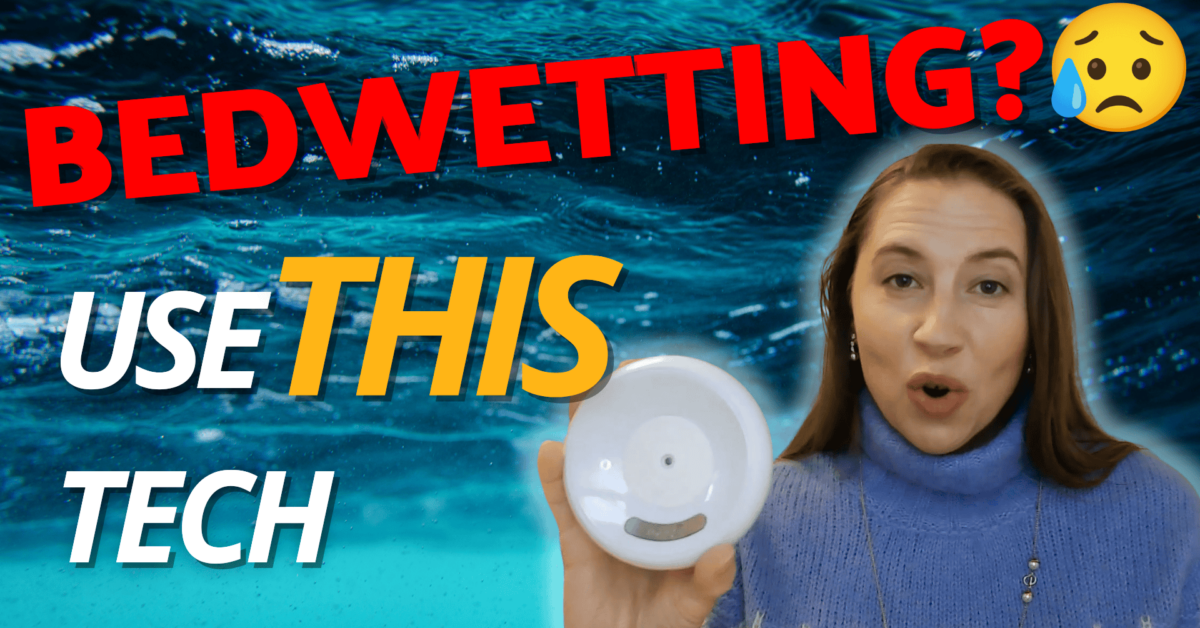Why do autistic kids wet the bed? The science and solutions you need to know. If you’re a parent of a child with autism who still wets the bed, you are not alone. This is way more common than you might think.
Today, we’re breaking down exactly why it happens, what the science says, and the strategies that actually work. Stick around. By the end of this post, you will feel confident in helping your child move past bed-wetting.
How common is bedwetting?
20 to 40% of autistic kids still wet the bed past the typical age. Compare that to just 5 to 15% of neurotypical kids. That’s a huge difference. What’s really causing this? Let’s dive into the science.
What causes bedwetting in autism?
It is not about laziness. It is about health, development, and how the body processes signals. Here’s why autistic kids struggle with bed wetting more than others.
Health issues
Many autistic kids have gut infections that interfere with how they feel their body, and some kids don’t even feel the wetness of pee. I know that might seem hard to imagine. How could you not feel being wet? But it happens.
Also, something that’s so common as a urinary tract infection can also prohibit staying dry at night. If you go to your general pediatrician, they might turn around and say, “Listen, it’s just autism. They’re going to wet the bed. It just happens.” That is so not true. You really want to get methodical about health and check to make sure there’s not a urinary tract infection because maybe your child can’t explain that it hurts. If your doctor is unwilling to explore certain health issues, find another one. There definitely are great doctors out there. Work with the great one. It makes a difference.
Developmental issues
Many children with autism have retained primitive reflexes that directly interfere with the ability to stay dry during the night. I’m not sure if everyone is familiar with primitive reflexes.
Primitive reflexes, very quickly, are automatic movements that originate in the brainstem during infancy. There are two primitive reflexes that if retained past typical development, then many times could be the root cause for some of the nighttime bed-wetting. The two primitive reflexes to really look at and evaluate would be the
- spinal galant reflex and
- the moro reflex
So first you would want to work with someone who is very knowledgeable about primitive reflexes, and you would want to test to see if the primitive reflex is actually retained. And if it is, then you can integrate it.
To integrate a reflex, there are certain exercises to do repetitively until that reflex integrates. Typically, someone in the occupational therapy space is very familiar with primitive reflexes.
Primitive reflexes can unintegrate when someone has maybe a stroke or seizures, sometimes after really intense physical exertion, sometimes even marathon runners it happens to. So this is not just in autism, that primitive reflexes unintegrate. But you definitely want to work with someone who is knowledgeable in this area.
Please keep in mind that certain health issues might prevent the primitive reflex from staying retained. Sometimes kids go through occupational therapy and they work on the reflex, and then all of a sudden it’s unintegrated again. Some practitioners will say, Well, it was never fully integrated, but there are different health issues that can cause a primitive reflex to unintegrate. Again, you want to get at the root cause of these health issues.
Neurological and sleep factors
Deep sleep
Many kids with autism sleep deeply, so deeply that their brain just might not wake them up when their bladder is full. Others have disrupted sleep cycles, which can interfere with normal bladder control.
Seizures
Some kids have seizures at night, and the seizures can actually cause bed wetting. In this example, once the seizures are controlled, the bed-wetting stops. So again, you really want to get at the root issue of why there is bed wetting.
Supplements
Others might be taking supplements that impact drowsiness and increase bed wetting, and some supplements increase urination. So you really want to understand what supplements you’re giving your child and the reasons why.
Late night liquids
The last one, is, that sometimes kids are just drinking liquids too late at night, which then just magnifies the issues.
Confused by all the information about autism? I got you. Click the link and see how we can work together. Let me break down the science and provide you with clear, actionable steps to make your path forward much easier.
Now that we know why it happens, let’s talk about how to help.
Top strategies to help your child stay dry at night
Resolve the health issues.
I’ve worked with many parents, and when we focus on getting the child healthy, many times, believe it or not, the child potty trains himself. It’s absolutely glorious to experience that. I love it when parents don’t have to buy diapers anymore. It is totally possible. You’ve got to focus on health reasons. There are so many health issues, as I mentioned before, that really should be evaluated and resolved.
Integrate primitive reflexes
Make sure to have primitive reflexes evaluated and then focus on integrating them if they’re an issue.
Track patterns
So keep a simple diary. You can put it on your phone. When are accidents happening? Are there patterns? Is your child drinking too much before bed? That’s basic. Adjust accordingly. Is bedwetting only happening during the full moon or a new moon? If you have a diary and you’re tracking them, you can compare very easily. Is it when they eat certain foods during the day? Bed-wetting can be triggered by food sensitivity. Many times the pattern will give you ideas about what the root issue could be.
Medication if needed
Medication is not for everyone, but for some kids, it’s a game changer. So keep that open as an option and talk to your doctor about it.
Technology
Lastly, once you’ve worked on the health issues, you can consider a bed-wetting alarm. There are a variety of them. I got one here. Let me show you one of my favorite ones that I recommend to parents that I work with.
Rodger Wireless Bedwetting Alarm
This is called Rodger. This is the base. Then there is a little transmitter, and then this is the underwear. Let me open up the underwear. All brand new stuff here. Okay, so this is the underwear. There’s this little Velcro piece. Oh, goodness. Oh, my Lord. Okay, That was very good Velcro. Okay, so this little transmitter goes, it snaps into the underwear, and then you close it again.
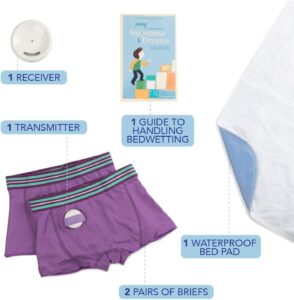
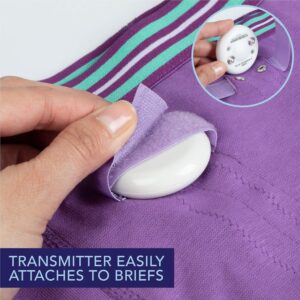
All right, so this is what it looks like. Your child is going to have this little thing protruding a little bit. Most kids, I haven’t gotten a lot of feedback when kids are wearing these. It doesn’t seem to bother them.
How does this work?
In the underwear, there are these little threads that are sewn in there. They detect wetness. The whole concept of the underwear is you wear the underwear. As soon as one drop comes out, the technology senses it, and then it transmits a signal from the underwear to the alarm, and then it’ll start beeping.
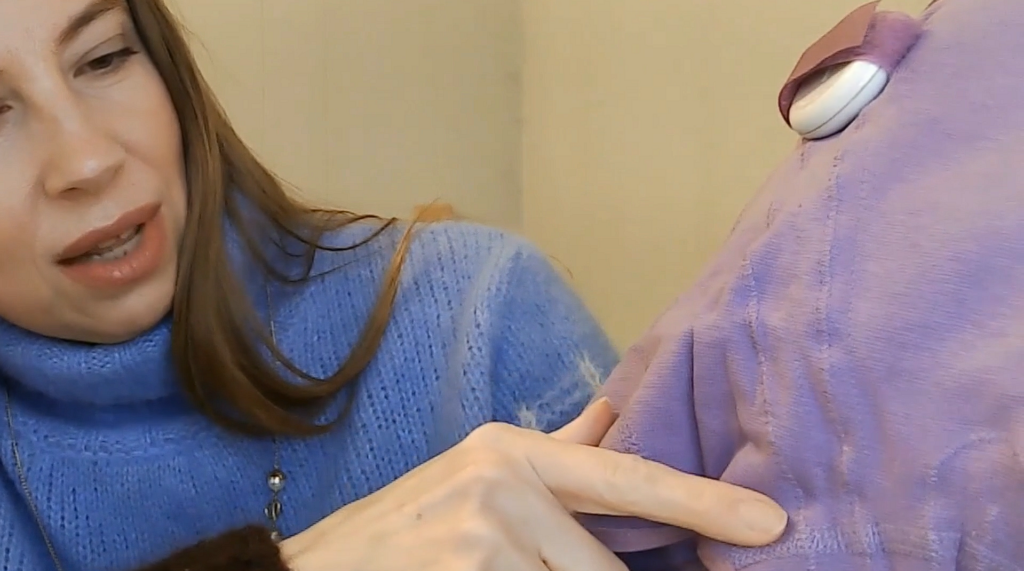
So the alarm literally alerts the child when the first drop of pee happens. So a lot of times the child will start to pee, they hear the alarm, then they wake up and clench, and then they stop the flow, so they learn to hold the pee, and then they go and finish in the toilet.
The whole idea is also then the parent is alerted as to when this is starting, and you can teach your child how to better manage that feeling of having to pee. This is a process.
You can get it to be really loud. There are different sounds. There are different levels of beeping.
I didn’t buy it, but there’s a vibrator, so a bed shaker. If your child is deep in sleep and they’re not going to be woken up by some beeps, then you can have the bed vibrate. The idea is to wake up the child but not traumatize them.
Work with the child
So definitely, you want to talk to them about the alarm, maybe show them how it works. I certainly would not recommend just putting these on your child and then having the alarm be a surprise. Nobody wants that.
And this company, Rodger, has certain stats, percentage-wise, about how many kids become potty trained at night by using this technology on their website.
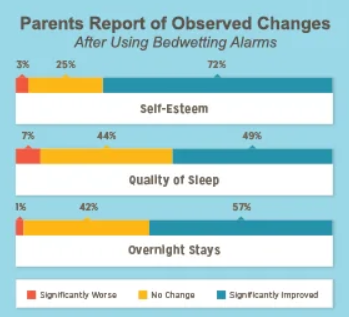
Freedom to move
I will say parents like this technology, especially the ones whose kids move around and beds change. Where everybody sleeps, it rotates and changes and things like that because there’s nothing on the bed itself. Your child can freely walk around and go to a different room. The only thing is you have to be within range so that the transmission can work. But you can buy multiples of these and put them around your house if your house is that big and you require it.
There are certainly many ways to get this to work, but it is really nice so that your child doesn’t have to stay in one bed. There are different bed wetting alarms that are just pads that you put in the bed. The feedback that I’ve gotten from those is a lot of times the alarm doesn’t go off as quickly.
Sensitive
This one, there are some kids where it’s literally like one drop and the alarm goes off. So this system is definitely very sensitive.
Bed-wetting alarms can work, but for kids that have sensory sensitivities, they can be overwhelming. So make sure you choose an alert and a sound. Maybe you don’t want any sound. You just want to buy the vibrator. Work with your child so that they’re not traumatized, but that they learn this skill.
Final thoughts
You are not alone. Bedwetting is not your child’s fault, and it’s not yours either. The first step is to make sure they are healthy. Really look at all the different things that could cause bed wetting and work with a great doctor who is open to exploring these different things.
Then look at primitive reflexes and then use technology to help teach them the process of getting up in the middle of the night. Because let’s be honest, who really wants to get up and go to the bathroom? Right?
